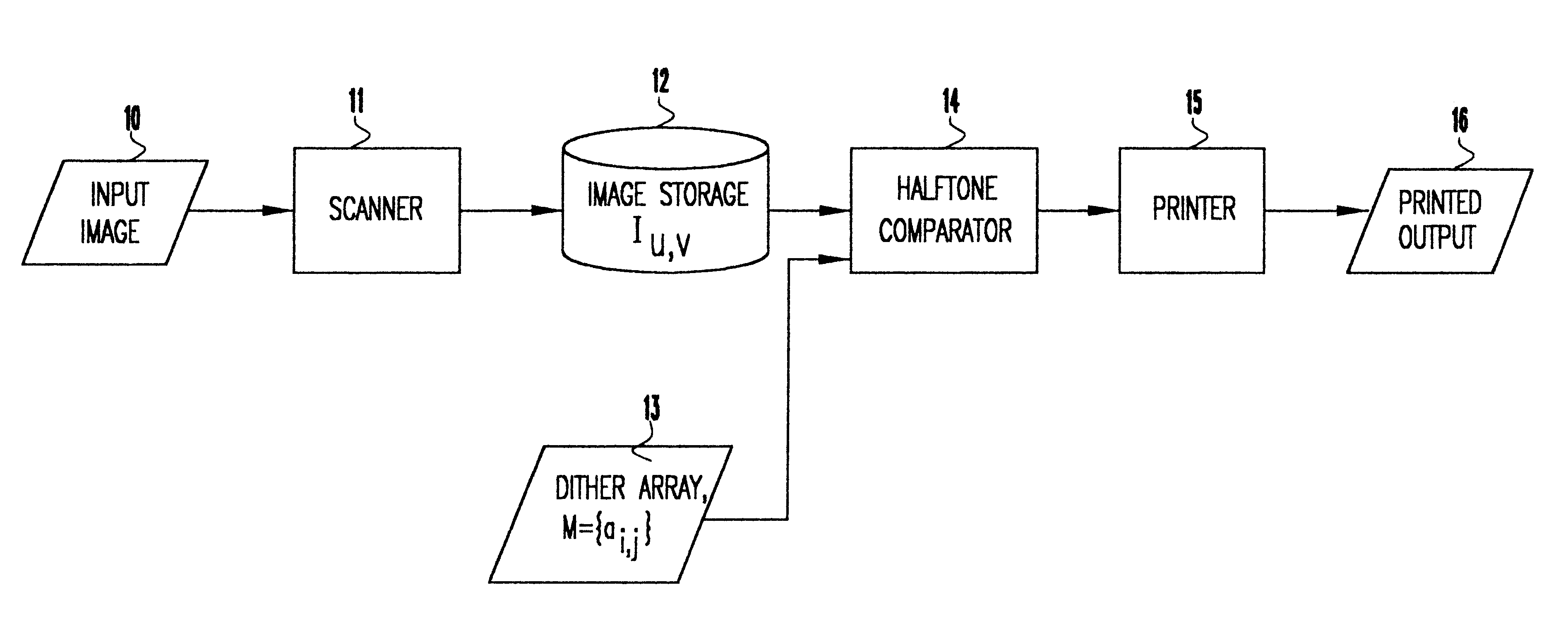Masks with modulated clustering and aperiodicity and rescaling of masks
a mask and clustering technology, applied in the field of digital halftoning techniques in printers, can solve the problems of inability to meet the needs of laser printers or xerographic printers, too small number of grey levels that can be represented using such a method, and blurred images
- Summary
- Abstract
- Description
- Claims
- Application Information
AI Technical Summary
Benefits of technology
Problems solved by technology
Method used
Image
Examples
Embodiment Construction
Referring now to the drawings, and more particularly to FIG. 1, there is shown in block diagram form the data flow from the input image to the printer: it represents the general method of digital halftoning using a dithering mask. More specifically, the input image 10 is scanned by a scanner 11 and stored in image storage 12 as image I.sub.u,v where (u,v) is the pixel location. A dither mask 13 is used to halftone the image in storage 12.
If L+1 is the number of grey levels to be represented, any m.times.n matrix M={a.sub.ij } we consider in this description is an array of numbers between 0 and L. These numbers represent threshold levels. Any dithering algorithm works as follows. Using the dither mask 13, M={a.sub.ij }, the pixel at location (u,v) in image storage 12 will get printed as a black dot if and only if a.sub.u,v is greater than the grey level on the image to be printed at location (u,v), where u'=u mod m, v'=v mod n. This is determined in the comparator 14, the output of w...
PUM
 Login to View More
Login to View More Abstract
Description
Claims
Application Information
 Login to View More
Login to View More - R&D
- Intellectual Property
- Life Sciences
- Materials
- Tech Scout
- Unparalleled Data Quality
- Higher Quality Content
- 60% Fewer Hallucinations
Browse by: Latest US Patents, China's latest patents, Technical Efficacy Thesaurus, Application Domain, Technology Topic, Popular Technical Reports.
© 2025 PatSnap. All rights reserved.Legal|Privacy policy|Modern Slavery Act Transparency Statement|Sitemap|About US| Contact US: help@patsnap.com



